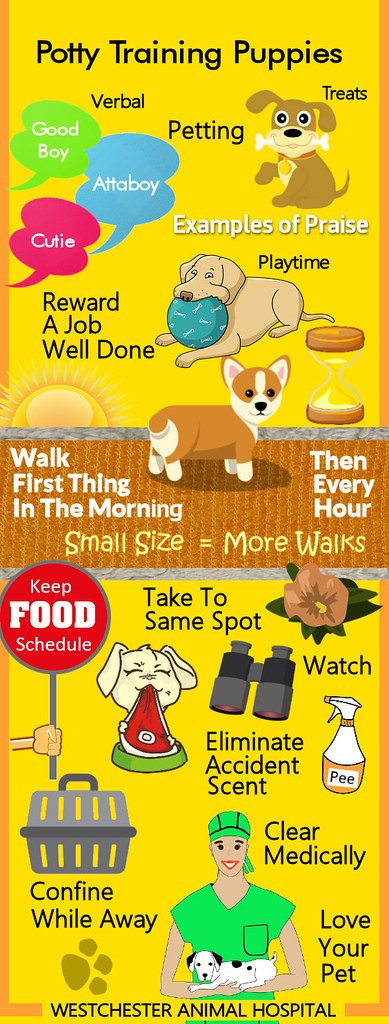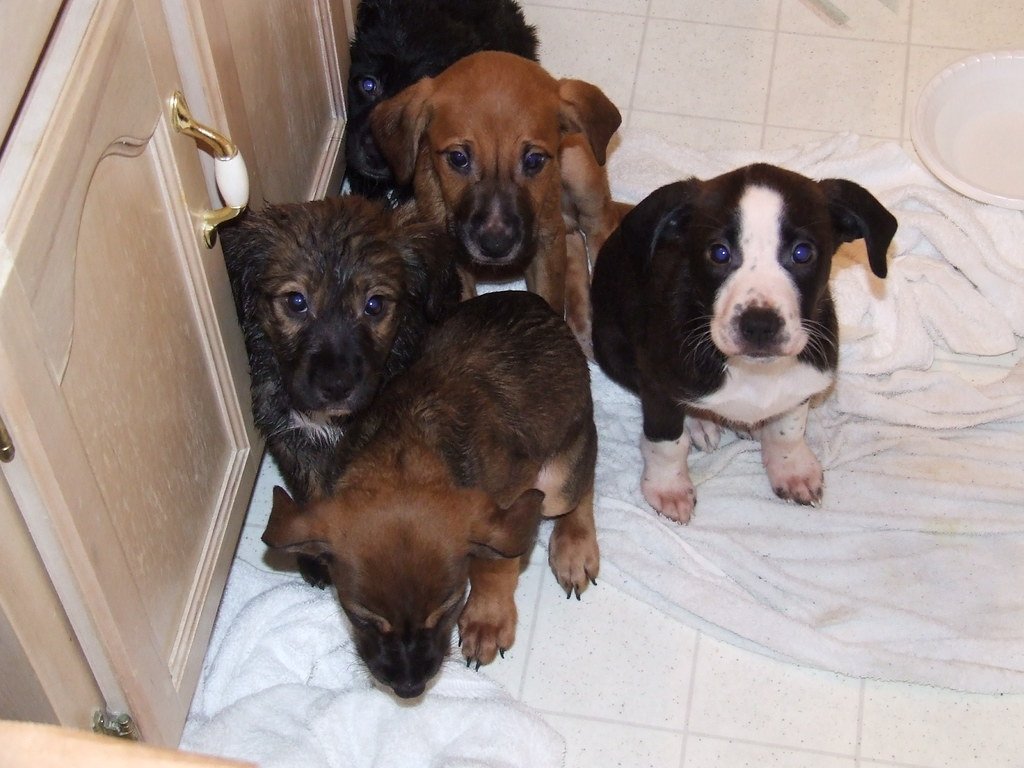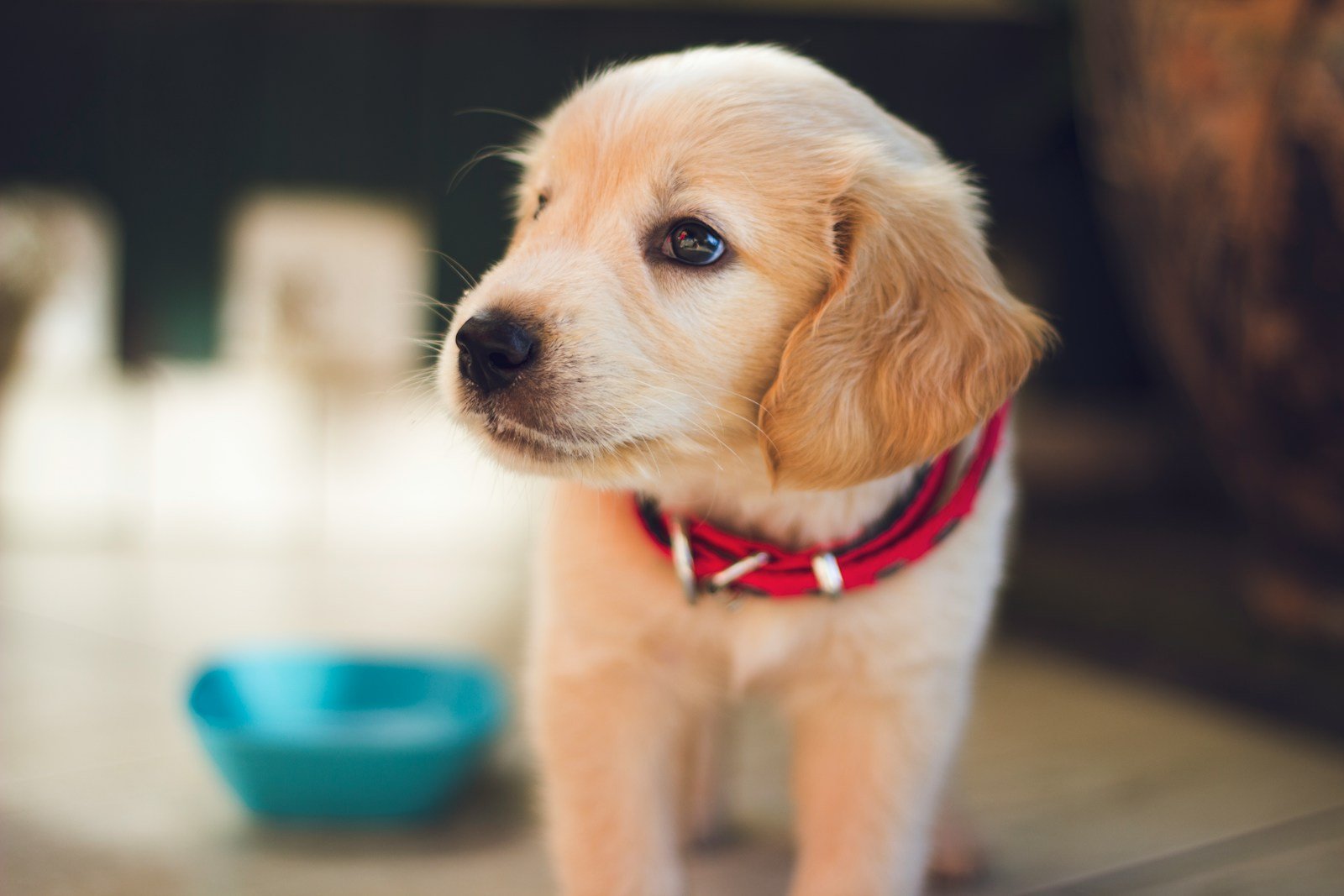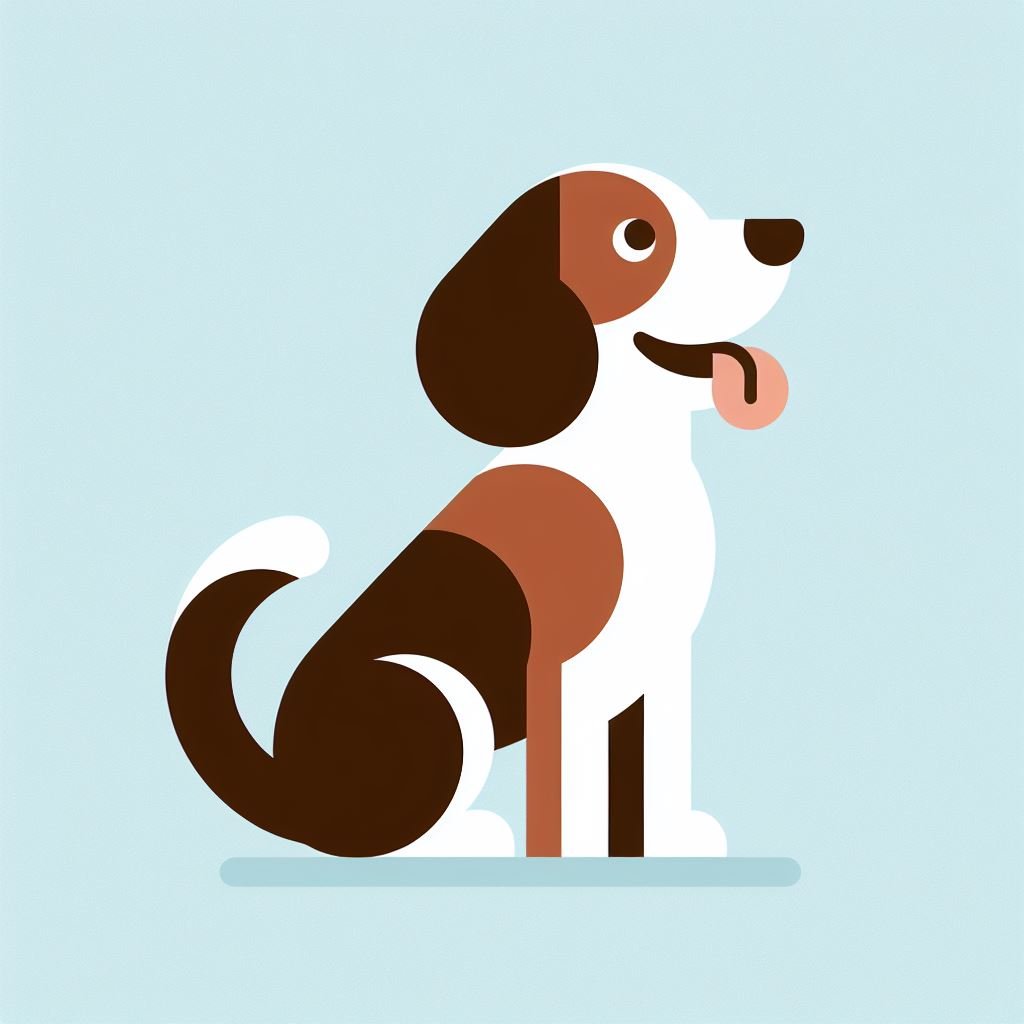I have been taking in dogs for more years than I care to admit, and I have discovered that it is possible to quickly train any dog, of any age, quickly and relatively easily. However, just like any training method, you must be consistent, or your time spent will be a waste.

I see people who pick up their new puppy from the pound, bring her home, show her the water bowl, feed her, love on her for a bit, then sit down and watch television while she wanders freely and unsupervised around the house. Guess what happens next! She will pick a very private but centrally located place to use the restroom, and her owner will find it ten, twenty, forty minutes later.
What does the owner do next? The owner picks up the dog, smacks it on the rear, rubs its nose in the urine and feces, yells at the pup, and then takes it outside. This is the wrong way to try to train your dog. It is completely ineffective, and I find that it makes other training difficult as well. Why does this not work? There is a very simple reason; the pup has no idea why its owner smacked it, no idea why it was yelled at, and no idea that it has done something wrong.
So what is a good way to house break your new child?
The most important part of house-breaking any dog is to initially limit the areas that the pup or dog is allowed to go. This does not mean that you need to close off your home with baby gates, or close all of the doors to prevent entrance. This does mean that when you bring home your new family member, you go where she goes. Everywhere she goes. If she is out of your sight you are asking for trouble.

Show her around the house, show her to the food and water dishes, and show her where she will be expected to sleep. Let her get a drink of water and a bite of food, and then take her outside immediately. Ideally she will use the bathroom that first trip outside. If that happens, praise her. Make sure that she knows that was good.
If it doesn’t happen after a reasonable amount of time then take her back inside, but do not let her out of your sight. The single most effective housebreaking tool is to catch her in action. If she has an accident and you are not there to see it, taking her outside will do no good. When she squats or hikes a leg to go, startle her. Do Not yell, but you do need to get her attention. Pick her up and carry her out the door that you want her to use (try to use the same door during training to prevent confusion about where she is supposed to be going), and set her on the grass outside.
It will take her a bit to go now because she has been startled, but be patient and wait for her to do her business. As soon as she does, PRAISE her. Give her a reward if that is how you plan to train her, but praise is imperative.

Additionally, I suggest kenneling pup or dog if you are leaving. This can be temporary, but especially during the training period this is extremely important.
Continue watching her until she is finished having accidents. It will not take long.
I have taken in adult dogs, pups at four weeks, and every thing in between. The longest this method has taken was nine days (for a very stubborn adult Springer Spaniel), and the fastest it has worked was on a six week old mixed pup who had only one accident in the house.
Best of luck, and remember, consistency is the key.







